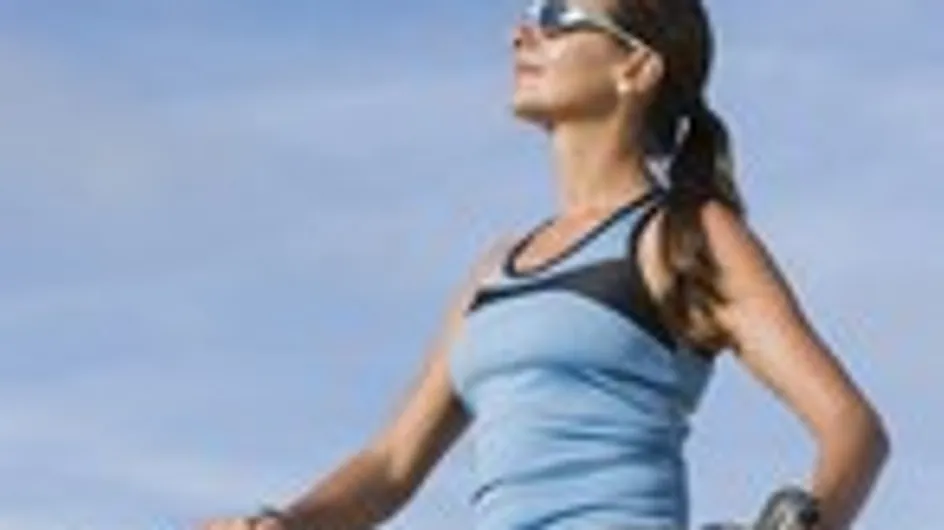Cycling is an environmentally friendly and ever more popular sport. As well as being green, it's easy, accessible to all and works the whole body.
Two wheels, three types
You can cycle practically anywhere. There are three main types of bike, suitable for different terrains and purposes:
- City bike. Essentially used for getting about in town and on tarmac roads. With a high saddle and handlebars, a basket and storage compartments, it’s made to be practical and comfortable.
-Road or racing bike. Only used for long journeys on roads or tracks and by professional cyclists. Streamlined and light, with low handlebars and very thin tyres, racing bikes are built for speed and endurance.
-Mountain bike. You can cycle anywhere with a mountain bike: on muddy or rocky paths, on the beach, on countryside trails, etc. Heavy and equipped with large, very knobbly tyres, they guarantee stability and absorb shocks.
Plus points
-Cycling expends a lot of energy. Pedalling at an average rhythm burns 300 to 600 calories per hour. Pedalling at a sustained rhythm (12 mph), burns 500/600 kcal/h. And after about half an hour, you start tapping into your fat reserves.
-It helps to prevent cardio-vascular illnesses. An excellent endurance sport, cycling gently strengthens the heart muscles, ventilates the lungs and supplies oxygen to the muscles. The only condition is that you ride regularly and in moderation!
-It reduces the risk of injury. On a bike, you don’t have to support your weight. It’s ideal if you’re overweight, have weak joints or are recovering from an injury.
-It tones the whole body. Cycling tones the thighs, calves and buttocks, and also works the torso, arms, lower back and abdominals, especially on the sides, when you grip the handlebars.
-It’s relaxing. You avoid traffic jams, you’re in the fresh air, you save time (and money) and you secrete the happy hormone, endorphin.
Downsides
-You’re not immune to accidents. Regardless of the route you’re taking, be it in the country or in town, you can’t escape the risk of a fall or collision.
-Routes can be irregular in terms of incline, etc. It’s best to check out the route beforehand, especially when you’re getting back into sport or if you’ve ever had heart problems.
-Mind your back. Bad positioning and putting uneven amounts of effort in can cause lower back problems. Just sitting on a bike can also give you bottom ache!
-When pollution levels peak, you’re in the front line with your nose just above all those exhaust pipes.
Advice for safe cycling
-Study your route before setting off, especially if you’re going off-road: familiarise yourself with the state of the terrain, changes in altitude, the length of the route... and the weather.
- Pace yourself. That’s what the gears are designed for! Free-wheel if you’re going downhill to help you gain your strength for going up the next hill! And spread out the workload by using your abdominals and upper body to make it easier to go forward.
-Choose equipment that’s specially adapted. You should ideally choose a bike that’s adapted to the type of cycling you’ll be doing (moderate or intensive, in town or on nature trails, etc) with the help of a specialist. They will also explain how to adjust the bike according to your body shape: it’s essential that you’re comfortable when you’re cycling.
-Wear a helmet. It’s strongly advised. If you fall, it could save your life.
For more information
British Cycling, the cycling governing body in Great Britain: www.britishcycling.org.uk
Sustrans, which coordinates cycle routes throughout the UK: www.sustrans.org.uk













